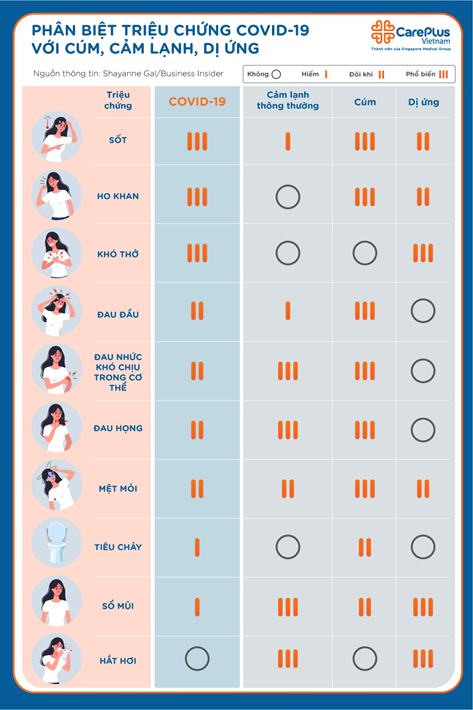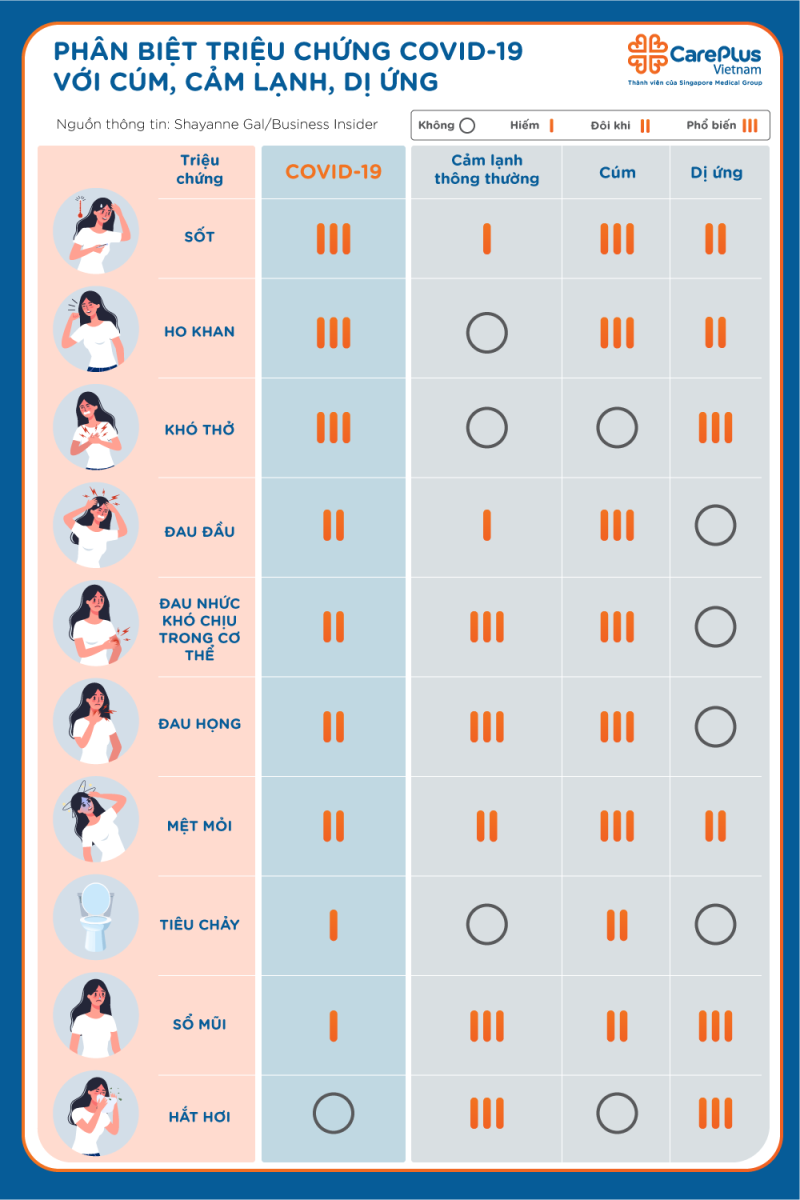How COVID-19 symptoms compare with those of the flu, common cold, allergies
Some symptoms of Covid-19 overlap with those of common cold, allergies, and flu.

8/11/2020 10:33:18 AM
Some symptoms of Covid-19 overlap with those of common cold, allergies, and flu.
Being able to distinguish between Covid-19 and the common cold, allergies, flu through the most concerning three symptoms which are fever, dry cough, shortness of breath.
Shortness of breath is the symptom that does not relate to cold or flu, although it is more likely to be associated with allergies.
If you sneeze or snivel, most of the time you are not positive with Covid-19. Flu tends to cause an uncomfortable aching feeling in the body or fatigue more than Covid-19.

Source: Shayanne Gal/ Business Insider/ Tuoi Tre Newspaper